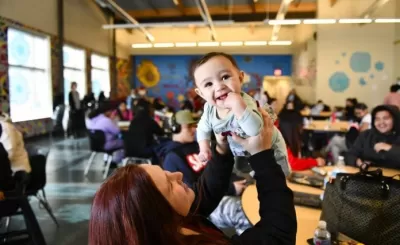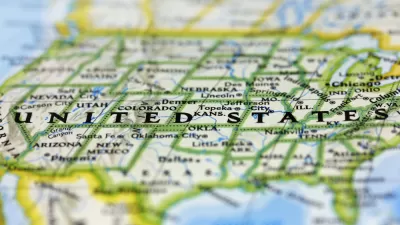Community land trusts, better known for permanently affordable housing, expand into commercial spaces for a wide range of reasons, and in a wide range of ways.

Ten years ago, Shelterforce editor Miriam Axel-Lute took a deep dive into what was then a somewhat uncommon use for community land trusts (CLT)—commercial space. In communities such as San Francisco, New Orleans, and Albuquerque, local stakeholders were evaluating whether existing community land trusts should take on commercial properties (and if so how), and if a new commercial-focused CLT would make sense.
Community land trusts are a form of community control of land by which land is held in trust in perpetuity for community benefit, even when buildings on the land are sold. Though the very first community land trust was primarily a working farm, for most of the time since then community land trusts in the United States have been primarily focused on providing stable, permanently affordable housing.
When a community land trust develops housing for homeownership, the CLT retains ownership of the land, and sells only the house, typically with a 99-year ground lease. The sale contract also includes an agreement on a resale formula so that when the homeowner eventually sells, they have accumulated some assets. But the home also stays affordable to another household of the same income. The model balances affordability with asset building, and is designed to benefit residents as well as maintain inclusive, stable neighborhoods.
“Theoretically and practically the community land trust mechanism for preserving the availability and often the affordability of commercial properties works the same as for residential, or at least it can work that way,” says Mike Brown, a partner in Burlington Associates, a national consulting cooperative that helps nonprofit corporations develop real estate. “The goal is to assist established businesses that just need access to space, and use the classic CLT model—where the business owner owns the building, and the CLT owns and leases the land—which then hopefully allows that business to remain successful over time.” Such a model, says Brown, can support more entrepreneurship in a community. “It may be able to launch [small businesses] to transition out of that space, and that space then remains available and affordable and you start the process all over again with another incoming business.”
CLTs may also be operating commercial spaces primarily for income, to support certain kinds of community uses and needs, or to support various types of business owners and organizations.
Shelterforce checked in with some of the communities featured in our 2011 article, as well as one other trust that operates a lot of commercial spaces, to see what happened to their plans and how the idea has evolved. While all of them have the basic CLT model in place—ownership in the land—each looks at their role in and reasons for offering commercial or office space quite differently.
...
FULL STORY: CLTs Still Going Commercial—Nonprofit Offices, Hairdressers, and a Sausage Factory

Alabama: Trump Terminates Settlements for Black Communities Harmed By Raw Sewage
Trump deemed the landmark civil rights agreement “illegal DEI and environmental justice policy.”

Study: Maui’s Plan to Convert Vacation Rentals to Long-Term Housing Could Cause Nearly $1 Billion Economic Loss
The plan would reduce visitor accommodation by 25% resulting in 1,900 jobs lost.

Planetizen Federal Action Tracker
A weekly monitor of how Trump’s orders and actions are impacting planners and planning in America.

Restoring Northern India’s Himalayan ‘Water Temples’
Thousands of centuries-old buildings protect the region’s natural springs and serve as community wells and gathering places.

Milwaukee to Double Bike Share Stations
Bublr Bikes, one of the nation’s most successful, will add 500 new e-bikes to its system.

DC Extends Application Window for Outdoor Dining Permits
District restaurants will have until the end of November to apply, but businesses with permits in rush hour parking lanes must end operations on July 31.
Urban Design for Planners 1: Software Tools
This six-course series explores essential urban design concepts using open source software and equips planners with the tools they need to participate fully in the urban design process.
Planning for Universal Design
Learn the tools for implementing Universal Design in planning regulations.
Caltrans
Smith Gee Studio
Institute for Housing and Urban Development Studies (IHS)
City of Grandview
Harvard GSD Executive Education
Toledo-Lucas County Plan Commissions
Salt Lake City
NYU Wagner Graduate School of Public Service




























